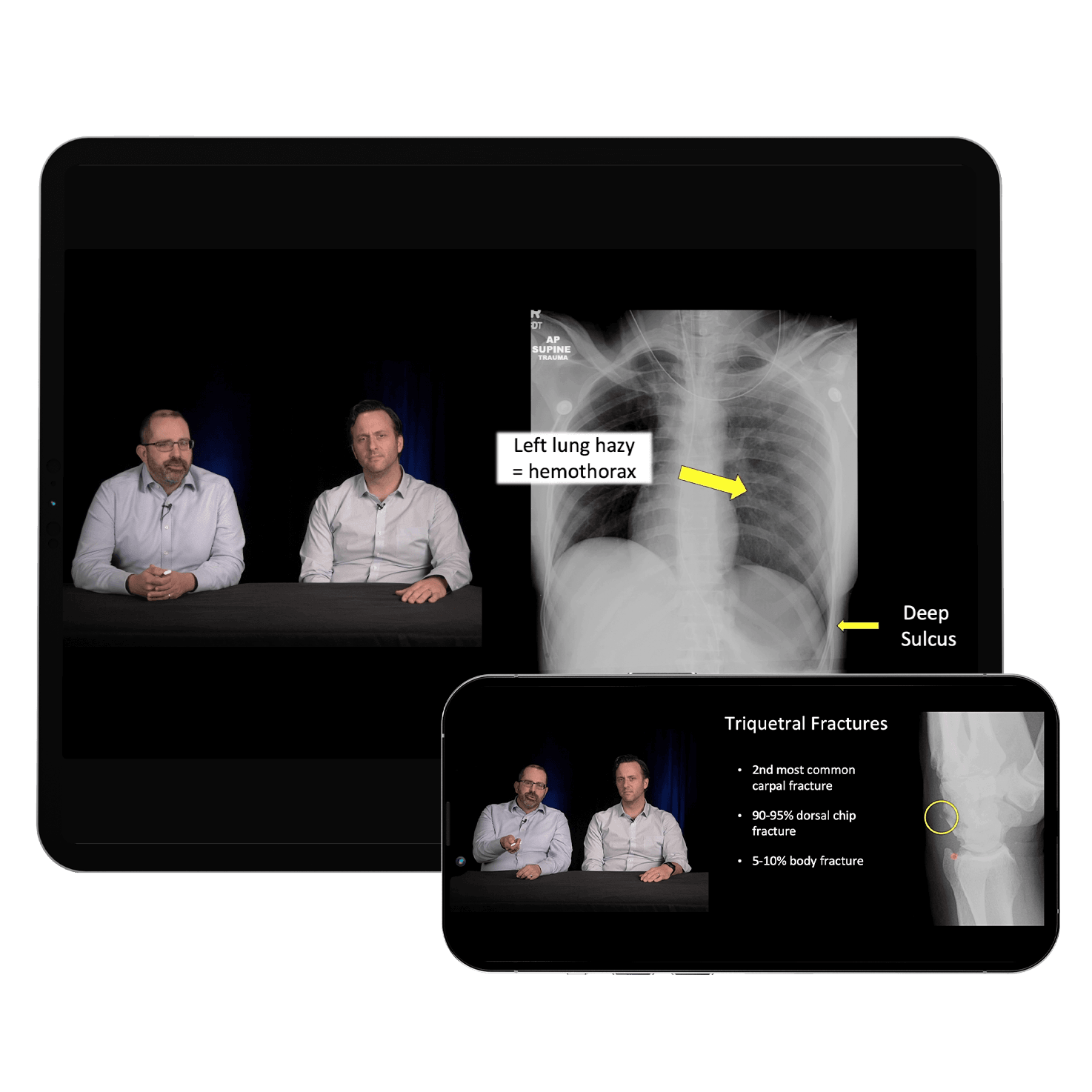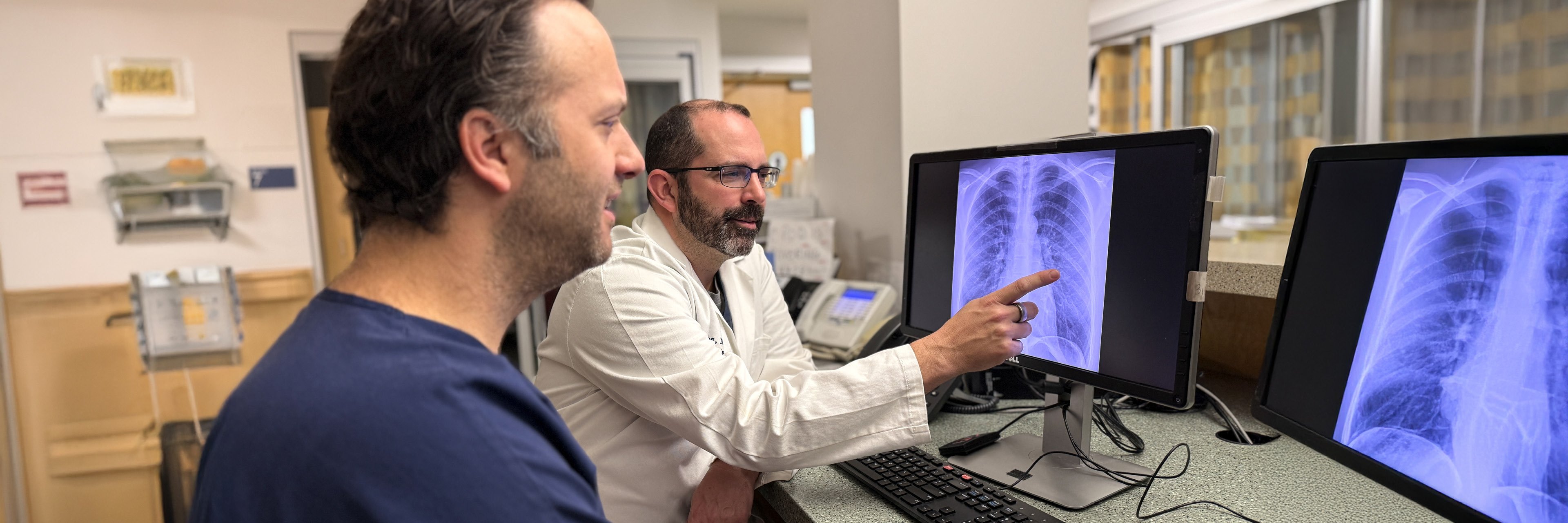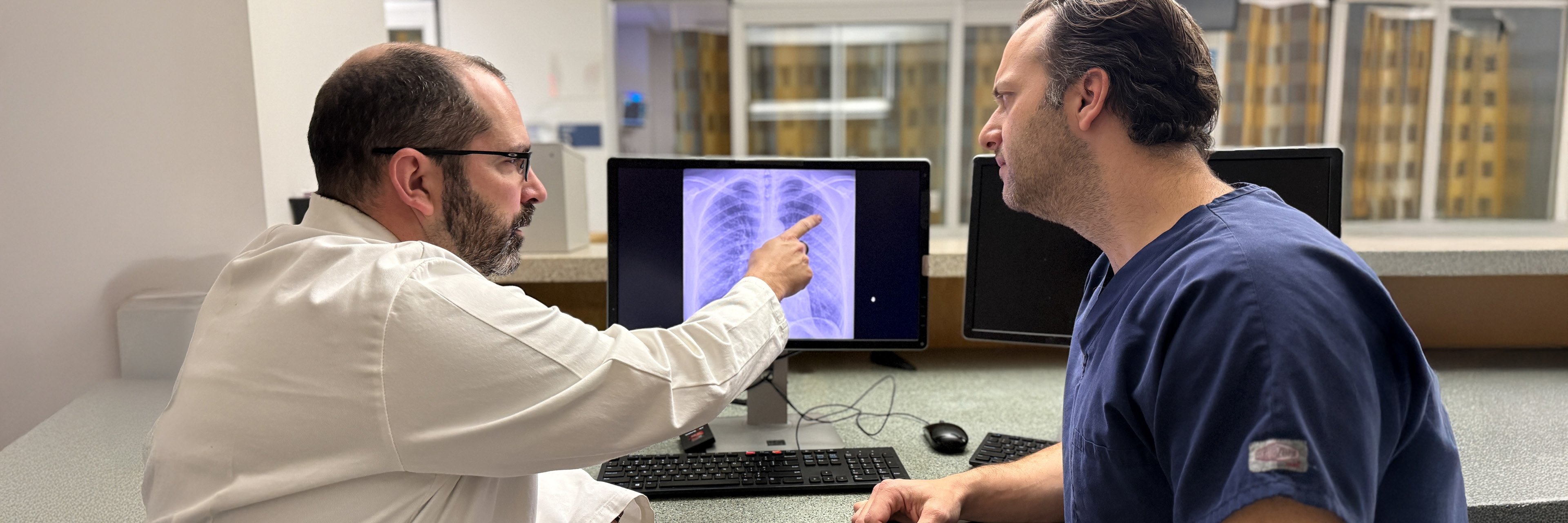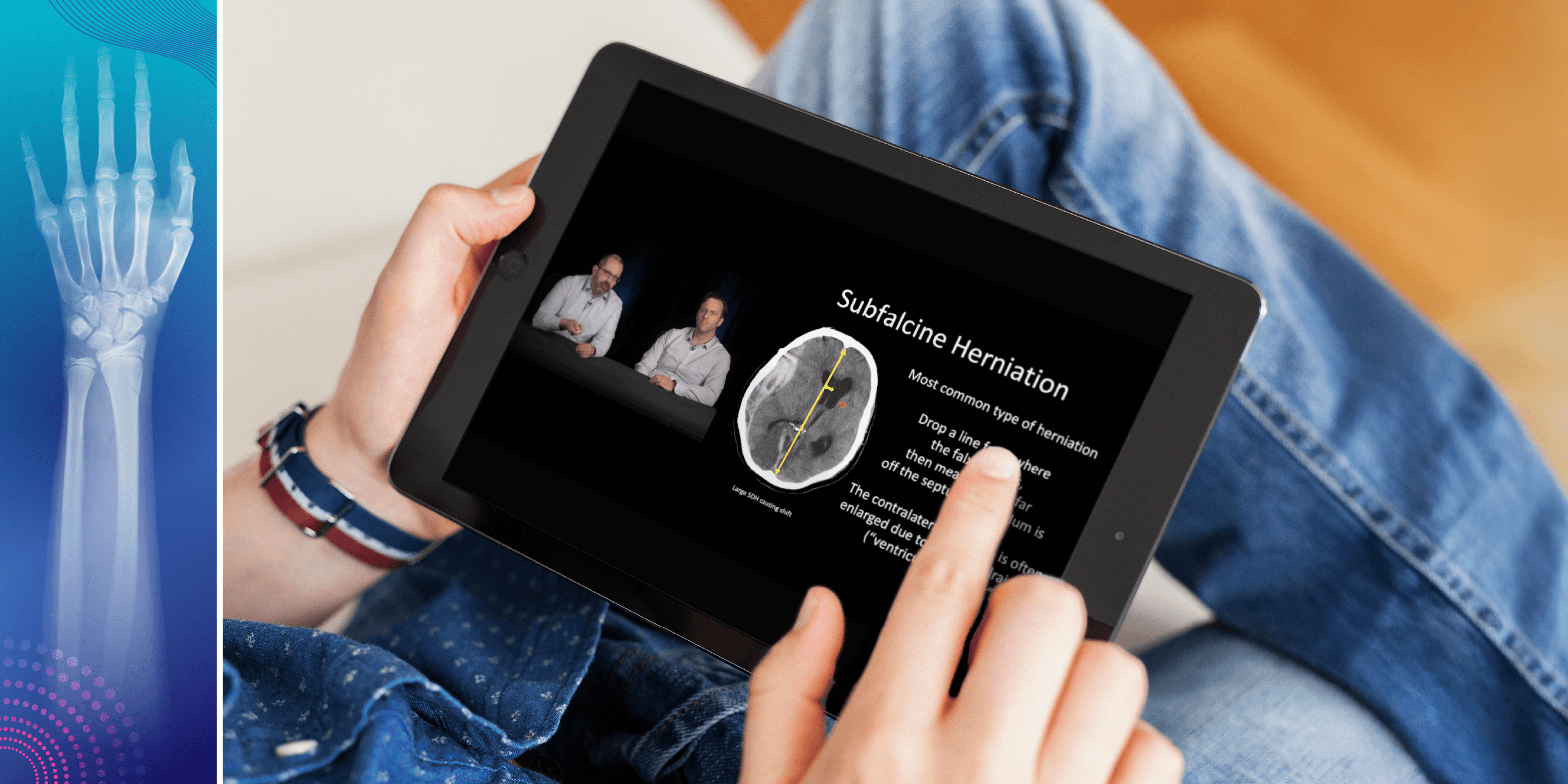
Mastering Emergency Imaging
An intensive, in-depth course designed to strengthen your expertise in emergency imaging.
Presented by two academic emergency physicians with a passion for teaching the intricacies of everyday emergency imaging, this course is tailored specifically to the needs of front-line emergency clinicians. Mastering the ability to choose the most appropriate imaging study and confidently interpreting core findings is essential in emergency care—and that’s exactly what this course delivers.
Purchase the Course
Essential imaging skills for emergency clinicians
Mastering Emergency Imaging is designed to strengthen and elevate the imaging skills of today’s emergency clinicians. Whether you’re a board-certified emergency physician or an advanced practice provider, all participants will come away with stronger skills in interpreting emergency imaging.
Instruction by two academic emergency physicians who have specialized in teaching emergency imaging courses throughout their careers.
Through the review of over 100 high-quality, case-based images, you’ll expand your understanding of the subtle but critical nuances in emergency imaging.
Come away with a new level of confidence in your ability to interpret your patients’ films, taking into consideration their clinical signs and symptoms.
Master the fundamentals of emergency imaging, including when are fat pads normal, how to identify a Lisfranc fracture, does IV contrast really cause renal injury, and much more.
Sample Lectures
A Comprehensive Educational Experience
This comprehensive program covers both the essentials of emergency imaging as well as current controversies using clinical scenarios, anatomic reviews and quality images.
Frontline Emergency Educators
Taught by experienced emergency physicians who understand the challenges of working in the ‘pit,’ this unique course is your opportunity to elevate your skills and build lasting clinical confidence.
Interpret with Clarity and Confidence
Effectively evaluating images requires a trained eye and targeted expertise. Designed for real-world application, this course equips you with the skills needed to deliver exceptional care in the emergency setting.


Start watching instantly and earn up to 10.5 AMA PRA Category 1 Credits™
Course Topics
Introduction to Mastering Emergency Imaging
Adult Chest X-Rays - Part 1: Tips and Tricks for Reading Like a Pro
Adult Chest X-Rays - Part 2: Traumatic and Structural Disorders
Adult Chest X-Rays - Part 3: Non-Traumatic Disorders
The Adult Upper Extremity - Part 1: The Wrist
The Adult Upper Extremity - Part 2: The Hand
The Adult Upper Extremity - Part 3: The Forearm, Elbow, and Shoulder
The ABCS² of Head CTs - Part 1: What Every Emergency Provider Needs to Know
The ABCS² of Head CTs - Part 2: Trauma Disorders
The ABCS² of Head CTs - Part 3: Non-Traumatic Disorders
The Adult Lower Extremity - Part 1: The Foot
The Adult Lower Extremity - Part 2: The Ankle
The Adult Lower Extremity - Part 3: The Knee and Hip
Chest CT Emergencies: What Every ED provider Should Know
Sticks and Stones May Break My Bones: A Pediatric Orthopedic Radiology Review
Pediatric Airway and Chest Radiology: Not Just Little Adults
Pediatric Abdominal Radiology
Abdominal CT Emergencies: The Basics and Beyond
Cervical Spine Imaging
Best Practices in Emergency Imaging
Course Faculty

Robert Tubbs, MD
Professor of Emergency Medicine at the Warren Alpert Medical School of Brown University
Developed an emergency radiology elective and rotation for EM residents, medical students, and APPs that has run for 17 years
Invited speaker on emergency radiology topics at the ACEP Scientific Assembly for multiple years
Lectured nationally and internationally on emergency radiology topics
Recipient, ACEP National Faculty Teaching Award and the CORD Distinguished Educator Award

Adam Janicki, MD, MS
Assistant Professor of Emergency Medicine at the Warren Alpert Medical School of Brown University
Former Assistant Program Director of the emergency medicine residency at the University of Pittsburgh
Established an emergency radiology curriculum for emergency medicine residents and faculty at the University of Pittsburgh
Created a repository of radiographic images for use in high fidelity simulation scenarios
Has won multiple teaching awards and is nationally recognized as an expert in emergency medicine education
Quickly learn critical emergency imaging concepts that can inform your decisions on your next shift.
Learn on your own time and at your own pace
Access the course at work—if you’re lucky enough to have the time—or at home when you’re ready to review a section. With the course’s extensive library of high-resolution images, you’ll get the best experience using a device with a larger screen.
Purchase the Course
Self-Study CME Accreditation
No commercial support was obtained for this program.
This activity has been planned and implemented in accordance with the accreditation requirements and policies of the Accreditation Council for Continuing Medical Education through the joint providership of the Center for Emergency Medical Education and The Center for Medical Education, Inc.
The Center for Emergency Medical Education is accredited by the Accreditation Council for Continuing Medical Education to provide continuing medical education for physicians.
The Center for Emergency Medical Education (CEME) designates this enduring activity for a maximum of 10.50 AMA PRA Category 1 Credits™. Physicians should claim only the credit commensurate with the extent of their participation in the activity.
The Center for Medical Education, Inc. is approved by the California Board of Registered Nursing, Provider #12345, for 10.5 Contact Hours.
The AOA automatically recognizes AMA PRA Category 1 Credit™ as AOA Category 2 credit.
Both PA and NP organizations recognize AMA PRA Category 1 Credit™ as approved CME.
CME Expiration Date: April 1, 2028
Target Audience
The Mastering Emergency Imaging course is intended for physicians and advanced practice clinicians who practice in emergency departments and urgent care centers.
Learning Objectives
At the conclusion of this enduring activity, participants will be able to:
Describe the indications for the gamut of imaging studies performed in a modern-day emergency department.
Remember the various imaging options and the order in which they are routinely performed when assessing a particular body part or system.
Be able to interpret to a reasonable level of confidence the findings of an imaging study and correlate them clinically.
Be able to understand and interpret the reports of radiologists.
Describe the indications for radiographic contrast and the associated adverse effects of using it in imaging studies.